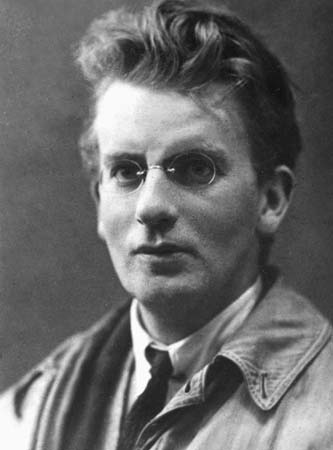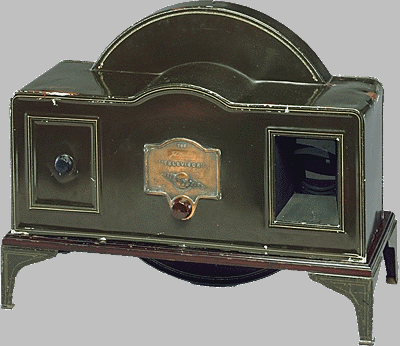This month (April 2012) sees the T.V ‘digital switchover’ taking place in London.
The analogue signal, which has served generations of television sets, will be switched off for good and if you don’t have the necessary equipment to watch digital broadcasts, you’ll be left gazing at a blank screen!
*
Television, by far one of the most prolific inventions of the 20th century, was born right here in London.
Its father was Mr John Logie Baird; a genius Scotsman.
Early Life
The son of a vicar, John Logie Baird was born in the seaside town of Helensburgh (about 30 miles west of Glasgow) in August 1888.
As a baby, John contracted a near fatal illness; something which left him plagued with ill health for the rest of his life.
Although he suffered from a weak constitution and was branded in school reports as being "timid” and "very slow”, there was nothing wrong with John’s mind which was both curios and brilliant.
As a child, he was fascinated by technology. By the time he 13 years old, John Logie Baird had already converted his parents’ home to electrical lighting (thus making their house the first in Helensburgh to boast the new technology), dabbled in remote-controlled photography and constructed a small telephone exchange which connected a number of neighbours in his street.
At the age of 18, John Logie Baird enrolled at the University of Glasgow where he studied Electrical Engineering.
A few years later, whilst he was contemplating furthering his studies, WWI broke out. Dropping his academic ambitions, John presented himself for military service but, due to the ill health which dogged him, he was deemed unfit.
Struggling in Business
Following the disruption of war, John Logie Baird spent time at the Clyde Valley Electrical Power Company before trying his luck as an independent businessman- including a stint as a jam maker in Trinidad!
Although Logie Baird had determination, he didn’t seem to have much luck in his ventures.
The jam making business failed- mainly due to the local insect population which seemed determined to ruin every batch!
Coming back to the UK in the early 1920s, the frail Scotsman, driven by his dwindling finances, told himself that he "had to invent something.”
Settling in Hastings, on England’s south coast (where it was hoped the sea air would improve his health), John’s first idea was a rust-proof razor; the blade being made from glass. This ‘cutting-edge’ concept (pardon the pun!) was quickly shelved when the inventor suffered a vicious cut whilst testing his new prototype!
Next up- and sounding like something straight out of ‘Wallace and Gromit’ - was a pair of ‘pneumatic boots.’ Inspired by the car tyre, Logie Baird envisioned a new type of sole, which would revolutionize walking.
However, these too were doomed to fail. In his autobiography, ‘Television and Me’ the Scotsman described why:
"I bought a pair of very large boots, put inside them two partially inflated balloons, very carefully inserted my feet, laced up the boots, and set off on a short trial run. I walked a hundred yards in a succession of drunken and uncontrollable lurches, followed by a few delighted urchins. Then the demonstration was brought to an end by one of the balloons bursting.”
*
Following these setbacks, John Logie Baird turned to something which his mind had been toying with for years… the idea of transmitting moving images.
It is believed the notion first came to John as a teenager, when he discovered a German book about the chemical selenium and its photoelectric properties (youngsters in those days clearly had to find novel ways of amusing themselves!)
Whilst in Hastings, the inventor began to dabble with the idea, cobbling together equipment from whatever lay around; glue, sealing wax, knitting needles, bicycle parts, even an old hatbox.
However, this process was rudely interrupted in autumn 1924 when an electrical explosion occurred in the workshop.
Logie Baird’s landlord, worried that he had a mad boffin under his roof, kindly asked the inventor to leave.
The Scotsman obliged, and decided to head for London.
*
A Lab in Soho
Once in the capital, John Logie Baird found an attic room to rent above 22 Frith Street in Soho.
As mentioned in my earlier post on Little Italy, these premises are now home to the famous 24 hour café, Bar Italia.
Once the new, cramped workshop had been established in London’s West End, John Logie Baird knuckled down on his novel invention.
The contraption which began to develop in the Soho attic was a large, complex device, characterised by fast, spinning discs, numerous lenses, powerful, flickering lights and a photosensitive detector.
Because of the power and size of the machine, accidents and breakages were common, as Logie Baird himself described;
"The apparatus would get out of balance and jump from one side of the laboratory to the other until it was stopped or the disc tore itself to pieces… I had some exciting moments.”
Despite the bulky nature of his creation, the actual screen upon which the pioneering images were displayed was tiny; just a few inches wide (even smaller than the image below)
From Fleet Street to Selfridges
At first, John Logie Baird was only able to transmit static images of silhouettes. Despite this, the inventor was confident that moving imagery would soon be achieved.
As well as being an inventor, Logie Baird was also a businessman, and he knew that his burgeoning creation would benefit greatly from publicity.
With this in mind, the keen Scotsman made his way to the Daily Express office on Fleet Street where he tracked down an assistant editor, and posed the immortal question:
"Are you interested in a machine for television… seeing by wireless?… An apparatus that will let you see the people who are being broadcast by the BBC…”
The assistant editor feigned interest but explained he had a meeting to get to. To compensate, he sent a colleague; "a large brawny individual” as John later recalled, to take note of the story.
This second newsman "listed sympathetically and with great interest” and then, with a handshake, told the inventor that he’d make sure the story got "a first class show” on tomorrow’s edition.

The former Express Building on Fleet Street; still one London’s finest examples of Art-Deco architecture
The next day- and perhaps unsurprisingly- the newspaper carried no sign of the story and Logie Baird quickly realised that the staff at the Express had been giving him the brush off.
It wasn’t until years later, when he happened to meet the ‘brawny individual’ again, that John got the full story. Apparently, the first fellow he’d met- the assistant editor- had run into the press room to fetch the brawny chap with the words;
"For God’s sake, Jackson, go down to the reception room and get rid of a lunatic who is there. He says he’s got a machine for seeing by wireless! Watch him carefully, he may have a razor hidden”!
*
One person who thankfully did not view John Logie Baird as a dangerous maniac, was Harry Gordon Selfridge; American owner of the world famous department store on Oxford Street.
Selfridge was always on the lookout for new innovations- especially ones which had the potential draw in large crowds. He was greatly excited by the idea of the ‘televisor’, and insisted that Logie Baird demonstrate the device at his store.
The exhibition ran for three weeks, the promotional posters splashed with the following blurb:
‘Selfridge’s present the first public demonstration of Television in the Electrical Section…
Television is to light what telephony is to sound- it means the INSTANTANEOUS transmission of a picture, so the observer at the ‘receiving’ end can see, to all intents and purposes, what is a cinematographic view of what is happening at the ‘sending’ end.
The demonstrations are taking place here only because we know that our friends will be interested in something that should rank with the greatest inventions of the century.’
*
The demonstration at Selfridge’s was well received, but John Logie Baird knew he had to take his invention up a notch; to progress from static images to live, moving ones…














